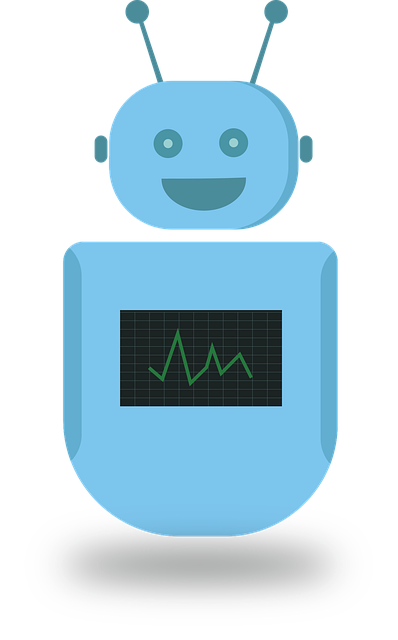Ecommerce chatbots powered by AI are revolutionizing lead generation strategies by offering 24/7 personalized support and product guidance, increasing engagement and conversion rates. By qualifying leads based on interests and needs, guiding users through checkouts, and enhancing experiences, these tools drive business growth and foster brand loyalty. Implementing them involves a strategic process of defining goals, choosing the right platform (e.g., Dialogflow, IBM Watson), designing conversational flows, training with diverse queries, testing, and monitoring performance based on KPIs like conversation rates and time to conversion. Future trends focus on enhanced personalization and improved NLP for more accurate, relevant responses.
In the dynamic landscape of e-commerce, lead generation is a constant challenge. With competition intensifying, businesses seek innovative solutions to capture potential customers effectively. Enter AI chatbots—game changers poised to revolutionize lead capture strategies. This article explores the transformative power of ecommerce chatbots, detailing how they understand customer needs, engage prospects, and drive conversions. We’ll guide you through implementing these tools step-by-step and measure their success, also highlighting future trends in AI chatbot technology for lead generation.
- Understanding Lead Generation Challenges in Ecommerce
- How AI Chatbots Can Transform Lead Capture Strategies
- Implementing Ecommerce Chatbots: Step-by-Step Guide
- Measuring Success and Future Trends of AI Chatbots for Leads
Understanding Lead Generation Challenges in Ecommerce

In the dynamic landscape of ecommerce, lead generation is a complex challenge. Businesses strive to attract potential customers amidst a saturated digital market, making it increasingly difficult to stand out and capture valuable leads. The competition for online shoppers’ attention is fierce, requiring innovative strategies to effectively reach and engage target audiences.
Ecommerce chatbots offer a promising solution to these challenges. By leveraging artificial intelligence, these chatbots can personalize customer interactions, providing instant support and tailored product recommendations. In doing so, they enhance user experience, boost engagement rates, and ultimately drive lead generation by nurturing prospects through the sales funnel more efficiently.
How AI Chatbots Can Transform Lead Capture Strategies

AI chatbots are revolutionizing lead capture strategies, offering a game-changing approach for businesses, especially in the competitive world of ecommerce. These intelligent virtual assistants can engage with potential customers 24/7, providing instant support and personalized interactions that traditional methods often fall short of delivering. By leveraging natural language processing, AI chatbots can understand customer queries, offer tailored recommendations, and even capture valuable leads by qualifying prospects based on their interests and needs.
The transformation extends beyond lead qualification; these chatbots enhance the overall customer experience. They can answer product-related questions, provide shipping and return information, and even guide users through the checkout process, increasing conversion rates significantly. Ecommerce businesses can leverage this technology to build stronger relationships with customers, foster brand loyalty, and ultimately drive more sales, making AI chatbots a powerful tool for any lead generation strategy.
Implementing Ecommerce Chatbots: Step-by-Step Guide

Implementing Ecommerce Chatbots: A Step-by-Step Guide
1. Identify Your Goals: Begin by clearly defining your objectives for introducing ecommerce chatbots on your platform. Are you aiming to enhance customer support, provide product recommendations, or boost sales through targeted lead generation? Understanding your goals is crucial for tailoring chatbot functionality.
2. Choose a Platform and Integration: Select an AI-powered chatbot platform that suits your business needs. Ensure it offers seamless integration with your existing ecommerce system. Popular options include platforms like Dialogflow, IBM Watson, or Microsoft Bot Framework. These tools provide customizable chatbots that can be trained to understand customer queries and respond effectively.
3. Design Conversational Flows: Map out the potential conversations your chatbot might have with customers. Create a hierarchical flowchart outlining various user paths, from simple product inquiries to more complex purchase scenarios. This step involves defining key triggers, responses, and branching points to ensure logical and engaging interactions.
4. Train and Test the Chatbot: Using your chosen platform’s training tools, teach your chatbot by providing sample questions and corresponding answers. Feed it a diverse range of user queries relevant to your ecommerce domain. After training, rigorously test the chatbot in various scenarios to identify and rectify any gaps or inaccuracies in its responses.
5. Implement and Monitor: Once satisfied with the chatbot’s performance, deploy it on your live ecommerce site. Continuously monitor its interactions, gathering analytics on user engagement and conversion rates. Regularly update and refine the chatbot based on user feedback and interaction data to ensure optimal performance.
Measuring Success and Future Trends of AI Chatbots for Leads

Measuring success is paramount when integrating AI chatbots for lead generation, especially in the competitive landscape of ecommerce. Key performance indicators (KPIs) can include conversation rates, where tracking the percentage of users engaging and converting through chatbot interactions provides valuable insights into its effectiveness. Time to conversion data offers another perspective by measuring how quickly prospects become customers after interacting with the chatbot.
Looking ahead, future trends in AI chatbots for lead generation suggest increased personalization and contextual understanding. Chatbots will learn from user behaviors and preferences, tailoring conversations for higher engagement. Integrating advanced natural language processing (NLP) technologies will enable more sophisticated understanding of user queries, resulting in improved response accuracy and relevance. This evolution promises to enhance customer experiences while driving more qualified leads for ecommerce businesses.
AI chatbots are revolutionizing lead generation in the ecommerce space. By understanding customer needs, providing personalized interactions, and automating initial contact, these chatbots effectively capture qualified leads. Following a structured implementation guide and measuring key performance indicators ensures success. Looking ahead, advancements in natural language processing will further enhance the capabilities of ecommerce chatbots, making them indispensable tools for businesses aiming to stay competitive in today’s digital landscape.
